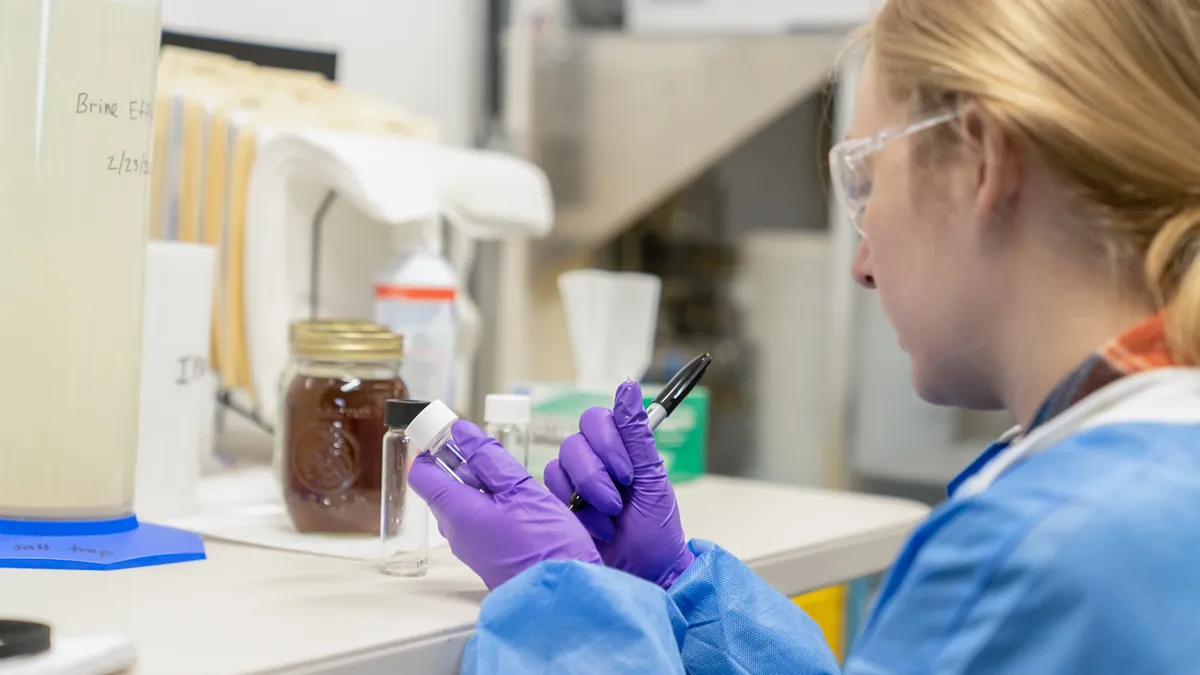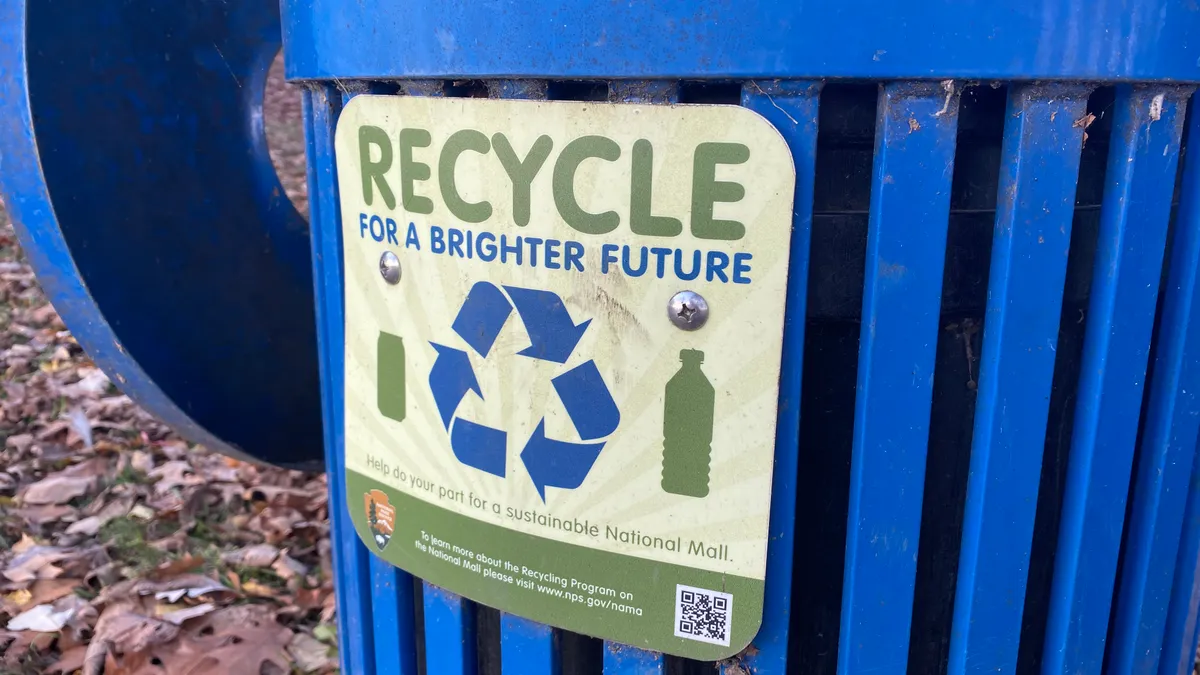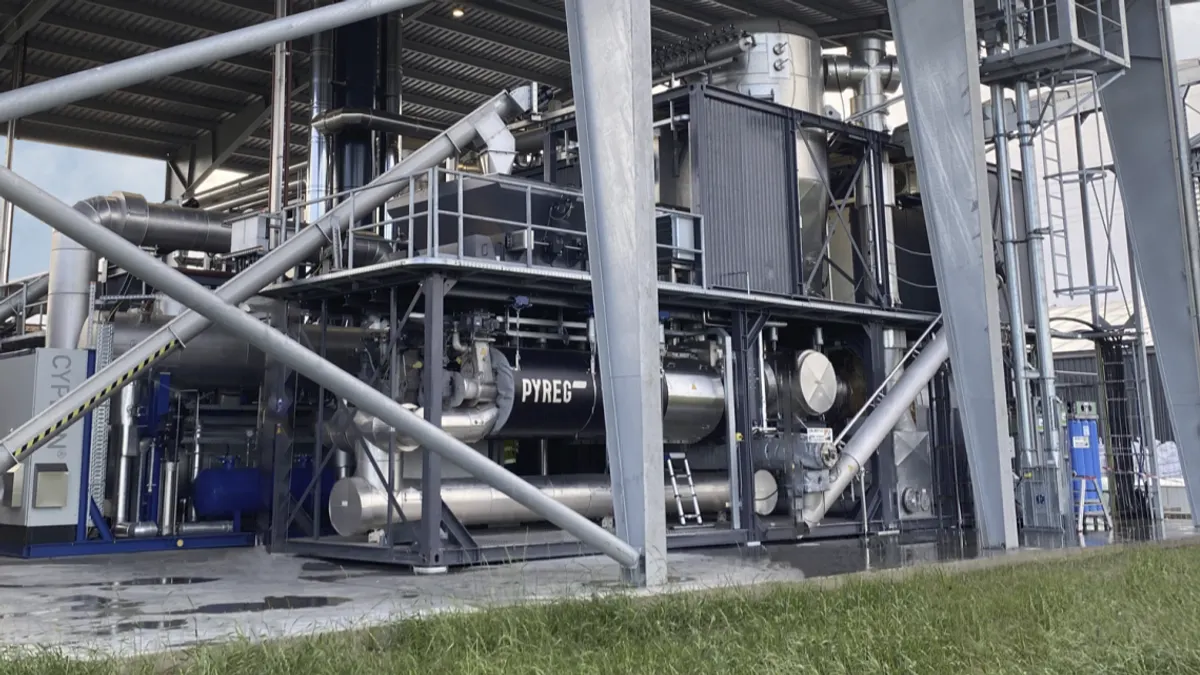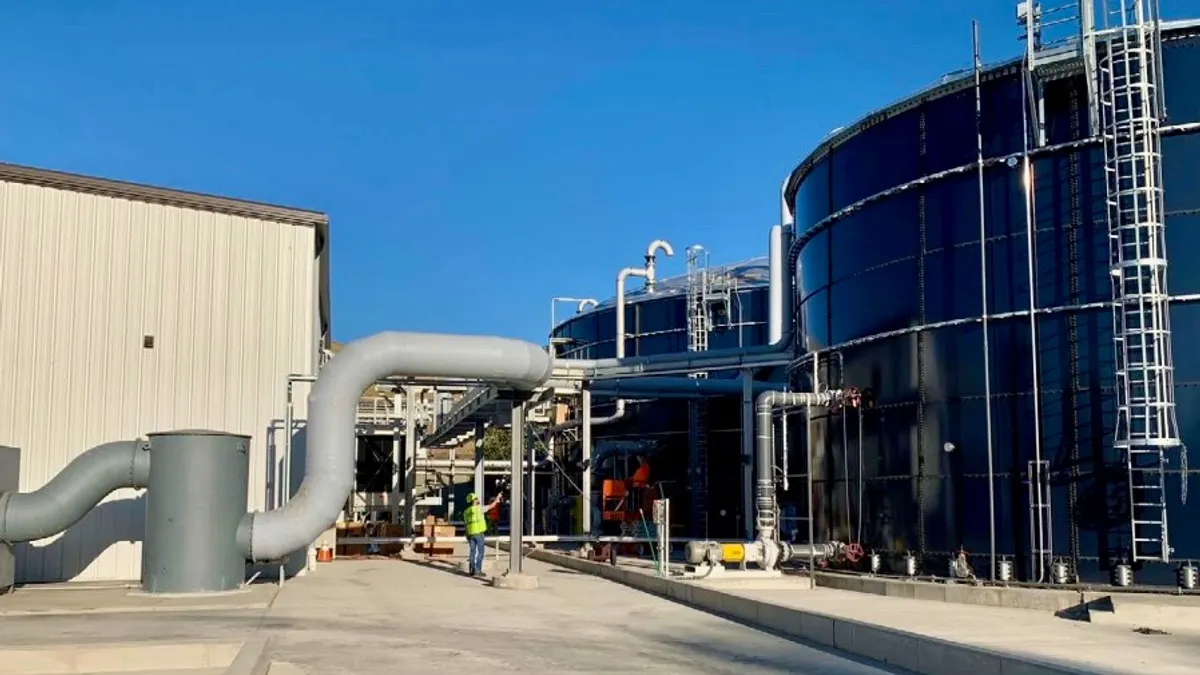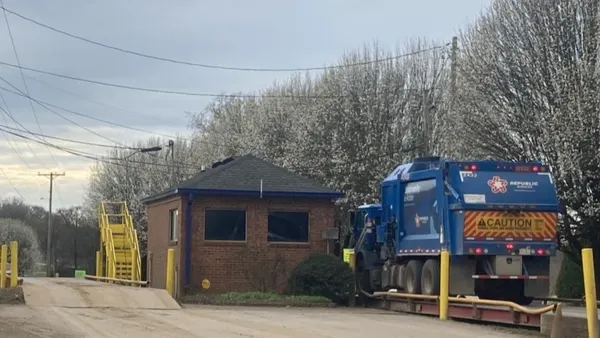Landfills release more PFAS to the environment than previously thought, according to updated PFAS destruction and disposal guidance from the U.S. EPA. To curb such releases, the agency said more research is needed to determine which technologies and methods will be most effective.
The EPA is required to update destruction and disposal guidance every three years with the most up-to-date information on such technologies. This latest version, released earlier this month, comes amid other major PFAS announcements that will affect how waste operators manage PFAS. On Friday, the EPA announced that PFOS and PFOA are hazardous substances. The agency also recently announced drinking water standards for certain PFAS.
Waste industry groups have said the destruction and disposal guidance isn’t considered to be the final word on PFAS management because the technologies — and the nature of PFAS itself — still require more research.
Technology companies, however, hope the updated guidance will make it easier for waste facility operators to navigate their options when budgeting and planning for PFAS mitigation efforts.
The updated document, the main federal guidance on PFAS management, provides more detailed information and research than its 2020 report. It describes the available science used in three “widely-used, commercially available” techniques: landfilling, thermal treatment and deep well injection.
New research since the last report offers more details on how certain types of landfills handle PFAS, indicating more confidence in Subtitle C hazardous waste sites. Multiple studies have reported elevated levels of PFAS in leachate and landfill gas over the years, and recent data estimates up to 15% of “mobile PFAS disposed in MSW landfills is emitted to the environment over time.”
The guidance document also indicates that some types of incineration or thermal treatments are more effective at destroying PFAS than previously thought, but only under certain conditions. It also highlights new and “emerging” technologies not mentioned in the previous report, and it offers a technology evaluation framework meant to help operators determine which available technologies will work for their needs.
The framework is meant to offer a “transparent approach for evaluating and selecting a technology” for safety and effectiveness. The EPA has asked technology developers to generate and publicly release data to make evaluations easier.
Updated landfill guidance
The EPA clarified its guidance on disposing of PFAS-containing materials in landfills, saying that certain categories are better for certain types and concentrations of PFAS-containing materials. However, “for all landfill types, new information shows landfills release more PFAS to the environment than previously thought in 2020.”
The EPA called for more research into how PFAS are migrating from landfills into the environment. Certain types of soluble PFAS are likely to be released in landfill leachate. PFAS could also be released in landfill gas, particularly at MSW landfills where organic waste such as food scraps can aid PFAS migration through landfill gasses when the material decomposes, the EPA said. The agency acknowledged that MSW landfills already have leachate and gas collection systems in place, but said typical landfill operations aren’t expected to fully prevent PFAS migration.
MSW landfills aren’t ideal for the disposal of items that contain high concentrations of soluble or volatile PFAS, it said. Technologies that solidify PFAS could help bind or sequester the material, but further research is needed on the availability and efficacy of these technologies.
However, MSW landfills could be a “good disposal option” for PFAS-containing items that are not typically water soluble or volatile, such as cooking pans made with Teflon, the document said. That’s because these types of PFAS are not likely to migrate with leachate or volatilize in landfill gas.
The guidance points to permitted hazardous waste landfills as a more fitting option for waste when PFAS concentration is “relatively high,” in part because Subtitle C landfills typically have lower leachate volumes than MSW landfills and are required to handle and treat leachate as a hazardous waste, “lessening the likelihood of environmental release.” Hazardous waste landfills generally do not receive organic wastes that decompose, it added. Some companies, such as Republic Services via its US Ecology subsidiary, have advertised their Subtitle C landfills as ideal PFAS disposal options.
Thermal treatment updates
The EPA sees thermal treatments as a possible method for destroying PFAS in leachate or landfill gas. New research since 2020 shows that thermal treatment units “operating under certain conditions” are more effective at destroying PFAS and minimizing releases or exposures than previously thought, “but uncertainties remain.”
The EPA sees potential in certain hazardous waste combustors and certain granular activated carbon reactivation units. That list includes commercial incinerators, cement kilns, lightweight aggregate kilns and thermal oxidizers. However, the EPA considers them effective only if such technologies are fed liquid material and operate at temperatures above 1,100°C, for an “adequate” amount of time, among other conditions.
At the same time, the EPA expressed “uncertainty” about thermal treatments that use lower temperatures such as municipal waste combustors, sewage sludge incinerators or certain hazardous waste incinerators because of insufficient data on the practice.
The EPA called for more data and testing on the processes, including whether incomplete combustion could create harmful air emissions or further the spread of PFAS.
Clean Harbors, which has made PFAS incineration a major part of its business offerings, incinerates leachate from its own landfills and recently rolled out a streamlined PFAS management service. Paul Bratti, senior vice president of operations, said the company is a “strong believer” in incineration because of multiple rounds of testing it has done to prove it can destroy PFAS at 99.9999% efficiency.
The company said it has been sharing its information and data with the EPA, including plans to conduct another incineration test in coming months to meet the EPA’s new analytical method, OTM-50. “We're hopefully going to help the EPA determine that thermal is the correct disposal method for people,” he said. “Part of that is being very transparent with our methods. We're excited to run the test.”
Emerging destruction and disposal technologies
Also new to the guidance document is a list of “emerging” technologies, including mechanochemical degradation, electrochemical oxidation, gasification and pyrolysis and supercritical water oxidation.
“Further work using newly available methods is needed to more fully characterize the outputs of these processes and to evaluate their performance for a wider range of PFAS-containing materials,” the EPA said.
Sudhakar Viswanathan, vice president at PFAS mitigation company 374Water, said the company has been developing its supercritical water oxidization technology for several years and is now working with agencies like the U.S. Department of Defense on cleanup strategies.
He applauded the EPA’s technology evaluation framework and said his and other PFAS companies benefit from submitting data and working with the agency and researchers to make the technologies more transparent.
“I think a lot more people are going to be comfortable with adapting and using technology like ours in the coming years,” he said. “With all the innovation and the technologies that are out there, there are many choices for people who pick and choose what is going to be best and most applicable for their industry.”
David Trueba, CEO of Revive Environmental, says disposal guidance helps bring clarity to a field of technologies that many waste operators are getting to know for the first time. Revive, a division of Battelle, also uses a supercritical water oxidization process and has partnered with companies like Heritage-Crystal Clean. “It’s our job to [manage] people’s waste by being responsible with it and show that through accountability and transparency.”
The guidance document also maintains that underground injection wells are a “feasible and effective disposal option that normally should minimize release of PFAS into the environment.” Companies such as VLS Environmental Solutions, which expanded in this category via last year’s acquisition of Texas Molecular, have touted this as an option for certain types of waste. The EPA said such methods are only fit for liquids and should only be built in places where the geology is stable.


